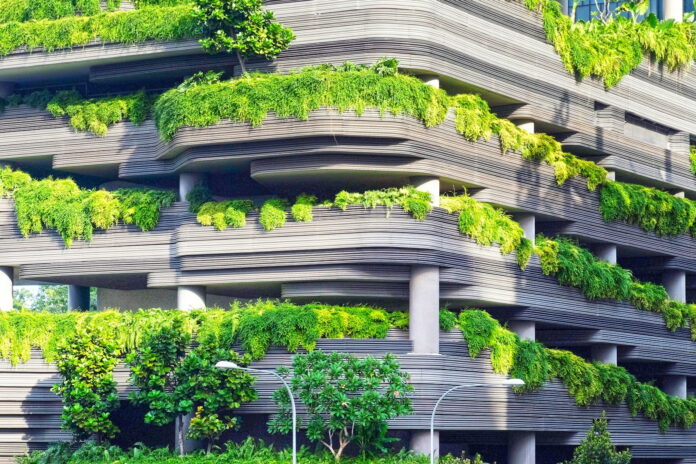Cities are not just centers of human activity; they are also home to a diverse array of wildlife species. As urban areas expand, the need to create harmonious environments for both humans and animals becomes increasingly important. Urban sanctuaries, which integrate wildlife habitats into city planning, offer a solution to this challenge. By understanding urban ecology, designing green spaces for wildlife coexistence, and implementing policy frameworks for urban biodiversity, cities can become thriving ecosystems for all inhabitants.
Urban Ecology: Merging Nature with Metropolis
Urban ecology is the study of coexistence between humans and nature within the urban environment. It emphasizes the importance of integrating natural elements into city landscapes, not only for the aesthetic and health benefits they provide to humans but also as essential components for local wildlife. The merging of nature with metropolis involves creating a network of green spaces that can serve as corridors for wildlife movement. This connectivity allows species to migrate, forage, and reproduce, despite the urban sprawl.
Incorporating natural water bodies, such as rivers and lakes, into urban planning is crucial for maintaining aquatic ecosystems and providing habitats for a variety of species. These water bodies can be enhanced with native vegetation to improve water quality and create riparian buffers that support both aquatic and terrestrial life. Furthermore, the use of native plant species in landscaping contributes to the preservation of local biodiversity and provides food and shelter for native wildlife.
The concept of urban ecology also extends to the vertical dimension. Green roofs and living walls are innovative solutions that can mitigate the effects of urbanization by providing additional habitats and reducing the urban heat island effect. These green structures can host a range of species, from insects to birds, and contribute to the overall ecological network within the city. By considering the ecological functions of urban areas, planners and architects can create cities that are not only habitable for humans but also conducive to wildlife survival.
Designing Green Spaces for Wildlife Coexistence
Designing green spaces for wildlife coexistence requires thoughtful planning and a deep understanding of the needs of different species. Parks, gardens, and other green areas should be designed with the goal of providing resources such as food, water, and shelter for wildlife. This can be achieved by planting a variety of vegetation that produces nectar, seeds, and fruits throughout the year, ensuring a consistent food supply for a diverse range of species.
In addition to food resources, green spaces must offer safe havens for wildlife to thrive. This involves creating undisturbed areas where animals can breed and take refuge from urban disturbances. Incorporating features such as bird boxes, bat houses, and log piles can enhance these habitats and encourage species to settle within urban environments. Moreover, designing landscapes that mimic natural ecosystems can help facilitate the movement of wildlife and reduce the risk of human-wildlife conflicts.
Lighting is another critical aspect to consider when designing urban green spaces. Artificial lighting can disrupt the natural behaviors of nocturnal animals and interfere with migratory patterns. Employing wildlife-friendly lighting solutions that minimize light pollution can greatly improve the viability of urban habitats for these species. By integrating these considerations into the design of urban green spaces, cities can become more inclusive environments for both people and wildlife.
Policy Frameworks for Urban Biodiversity
Effective policy frameworks are essential for the protection and enhancement of urban biodiversity. These policies should be grounded in scientific research and best practices for conservation. They must set clear goals for the preservation of native species and the restoration of habitats impacted by urban development. Legislation can mandate the inclusion of green spaces in new developments and provide incentives for existing structures to incorporate biodiversity-friendly designs.
Urban biodiversity policies should also promote community engagement and education. By involving local residents in the creation and maintenance of urban sanctuaries, cities can foster a sense of stewardship and raise awareness about the importance of wildlife conservation. Educational programs can teach citizens about local ecosystems and the role they play in maintaining them. This community involvement can lead to more successful and sustainable urban wildlife initiatives.
Monitoring and evaluation are critical components of any policy framework. Cities need to establish systems for tracking the health of urban ecosystems and the effectiveness of conservation efforts. This data can inform future policy decisions and ensure adaptive management of urban green spaces. By implementing robust policy frameworks for urban biodiversity, cities can ensure that wildlife conservation becomes an integral part of urban planning and development.
The integration of wildlife habitats into city planning is a multifaceted endeavor that requires a holistic approach. By understanding and applying principles of urban ecology, thoughtfully designing green spaces, and establishing strong policy frameworks, cities can create urban sanctuaries that support biodiversity and offer a higher quality of life for all their inhabitants. As the world becomes increasingly urbanized, these strategies will be crucial for preserving the natural world within our urban landscapes.
